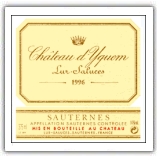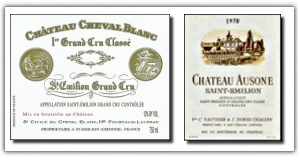Wine classifications

Introduction
Long before the establishment of the classification of 1855, before the classification of St. Emilion, and before the classification of wines from Graves,
the first wine classifications in Gironde, were established not by Château but by parish or by region.
In 1698, the intendant Basin Bezuns eacute; wrote to King Louis XIV that the most interesting wines were in the Graves, near the city of Bordeaux.
The second block for the reds was the Médoc. The third, for white wines was Barsac, Langon and other enclaves near the Garonne.
Thomas Jefferson, wine lover, who lived from 24 to 28 May 1787 in Bordeaux, proposed a hierarchy, which crowned four wines of first quality:
- Château Haut-Brion
- Château Latour
- Château Lafite-Rothschild
- Château Margaux
The classification established in 1855 from a request of Napoleon III still exists today and prioritizes the wines of the Medoc and Sauternes.
From this ranking, emerged 61 red wines and 26 sweet white wine.
Napoleon III wanted to honor the wines of Bordeaux, during the Universal Exhibition of 1855.
He therefore requested the brokers of the Chamber of Trading of Bordeaux for their own classification. The wines are then ordered
according to their prices in recent decades, but also the beauty of the buildings that house these wines.
Leaderboard honours Lafite, Latour, Margaux and Haut-Brion.

In Sauternes, Yquem is promoted to the rank of "Best First Grow".
The 1855 classification has been revised only once, with the promotion of Mouton-Rotschild
to the status of First grow in 1973.

In 1954, at the request of the "syndicat de défense des
vins de Saint-Emilion", INAO make the first ranking of the Crus of Saint-Émilion. INAO's decree
said that every ten years the classification would be renewed. Only wines of the appellation
Saint-Emilion Grand Cru can benefit from words "Grand Cru Classé" or "Premier Grand Cru Classé" according to official results.
The revisions in 1969, 1979, 1984 and 1984, 1996 and 2006 slightly modified the original classification.
Nowadays, Saint-Emilion classification has 13 "Premiers Grand Crus Classés" with an total of 860 hectares.
The initiative of the classification of Graves wines is from the Union of the Controlled Appellation Graves. The INAO (Institut National des Appellations d'Origine), by decrees in 7 August 1953 and 16 February 1959, classified wines by municipality and by type of wine. The establishment of classification was conducted in an atmosphere relatively tense and was not done easily. Unlike the classification of the Médoc (1855), the Châteaux are not classified as "Premiers" and "Seconds" grows. This classification has no hierarchy. The revision of this classification was not planned, it does not take account of changes over the years since its establishment. The entire Châteaux, identified by the classification, are located in the area of the appellation Pessac-Léognan, located close to Bordeaux.
The Sauternes and Barsac classification testify that white wines of this region had a
great fame in the 19th century. These are the only wines,
with Château Haut-Brion, to be selected in the famous classification of 1855.
This ranking has never been reshuffled.
Despite of several tries, wines from Pomerol have no official classification. However, a hierarchy can be released without official value.



 Regions of France
Regions of France Regions of Spain
Regions of Spain Regions and areas from the world
Regions and areas from the world